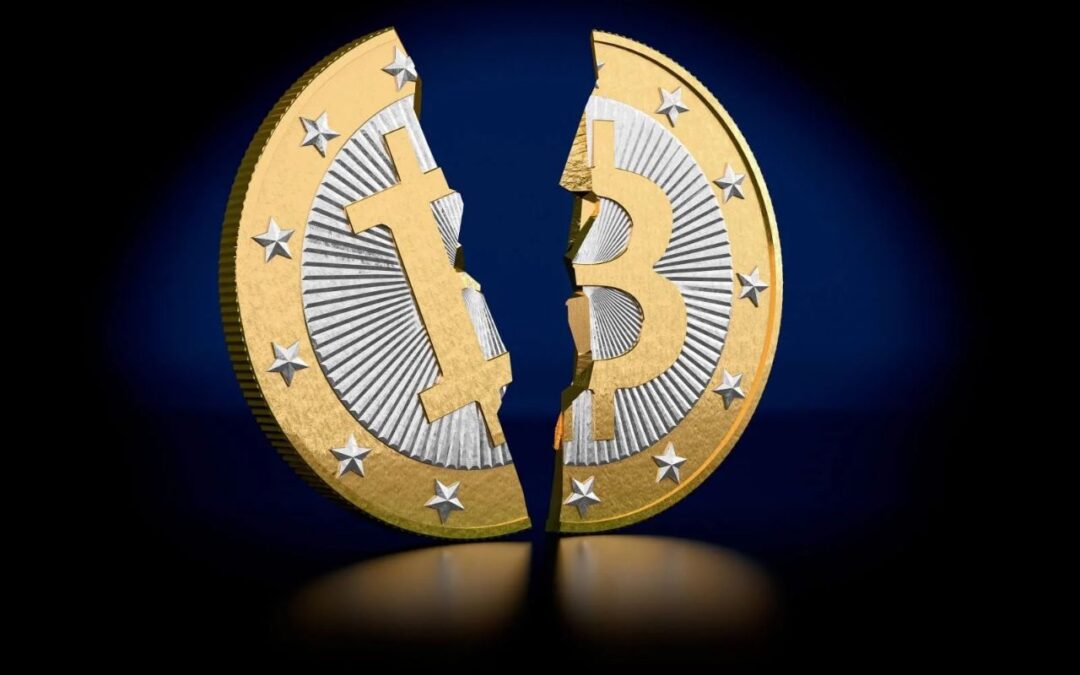Synopsis: Bitcoin faces division over the BIP-444 soft fork, which limits blockchain data to block spam and illegal content, but sparks backlash for threatening legal action and risking a network split.
Bitcoin is at a crossroads as a new improvement proposal stirs heated debate. This one-year soft fork proposal aims to limit transaction data sizes on the blockchain, sparking controversy inside the Bitcoin community.
The discussion challenges Bitcoin’s core principles and raises questions about its future, forcing users to wonder: Would you buy this improved Bitcoin or will the dispute cause a split like Bitcoin Cash?
Proposal with Legal Threats
The proposal, known as BIP-444 or Reduced Data Temporary Softfork, seeks to temporarily restrict data in Bitcoin transactions. It targets large non-financial data payloads such as images or texts embedded in transactions through the new Bitcoin Core v30 update. Supporters say this limits spam and removes illegal or immoral content risks, especially after recent changes that increased blockchain data usage.
However, the language within the proposal triggered outrage. It warns that rejecting the fork “may subject you to legal or moral consequences” and could lead to splitting off to a new altcoin like Bitcoin Cash (Bcash). Many users called this “an attack on Bitcoin,” seeing it as a legal threat coercing adoption. Critics argue it contradicts Bitcoin’s permissionless and censorship-resistant ethos, essential to its identity as a decentralized digital currency.
The Core vs Knots Divide
This debate reflects a deeper rift between two major Bitcoin implementations: Bitcoin Core, the dominant client, and Bitcoin Knots, maintained by developer Luke Dashjr, who supports the soft fork. Core advocates champion freedom to use the blockchain for any purpose if fees are paid, including data inscriptions that may slow the network or increase costs.
In contrast, Knots pushes to keep Bitcoin as a pure monetary system. It filters out “non-financial” transactions to protect block space and network sustainability. The rise of Knots node adoption shows growing resistance to Core’s direction. This ideological clash echoes the block size wars of 2017 and impacts the network’s technical and philosophical future.
Potential Consequences for Bitcoin’s Future
If the soft fork activates, it could reduce network spam and legal risks for node operators. Yet the tone and potential enforcement may alienate users who value neutrality, risking a chain split. Some warn this could usher censorship and centralization, undermining trust in Bitcoin’s decentralized model. Others see it as a necessary step to protect institutional miners and businesses from criminal liability tied to illegal content on the chain.
On the other hand, critics like cryptographer Peter Todd argue the legal threats are exaggerated and the proposal’s effectiveness limited, as past tech already allows embedding any data. The community remains sharply divided, with developer meetings anticipated to decide Bitcoin’s path forward.
What is the takeaway for holders from this?
This debate highlights Bitcoin’s growing pains as it balances innovation with core values. The proposal’s goal to protect Bitcoin’s monetary integrity is understandable. Yet, threatening legal consequences and limiting use cases risks fracturing its loyal community and raising barriers for new users.
Will this improved Bitcoin be a welcomed upgrade or spur a split reminiscent of the Bitcoin Cash saga? Only time will tell, but the fight shows that Bitcoin’s evolution is as much about philosophy as technology.
In sum, Bitcoin 2.0 is here, but whether it unites or divides the network remains uncertain. For users and investors, watching this drama unfold will be key to making informed decisions about Bitcoin’s future.
Written By Fazal Ul Vahab C H

